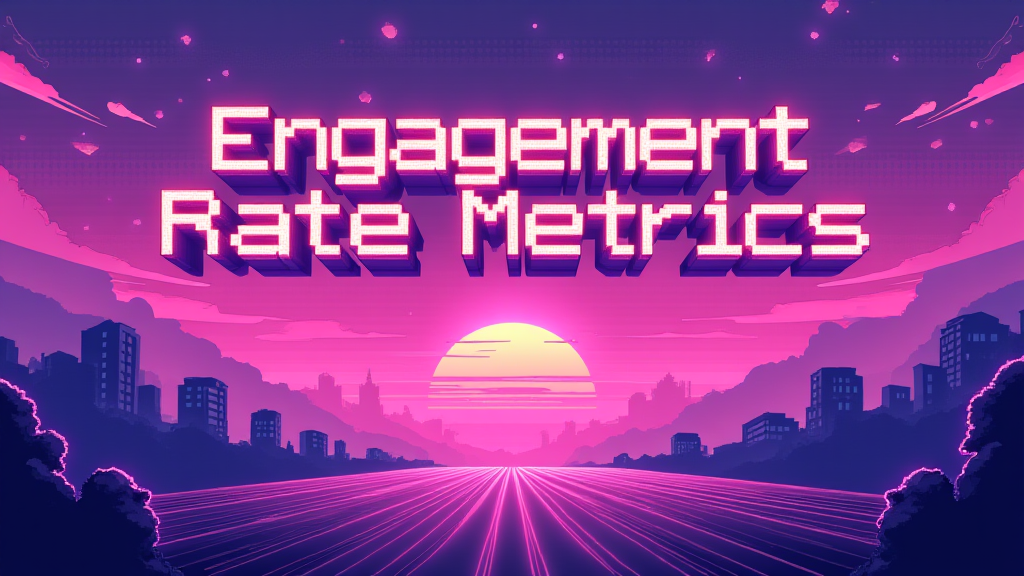Engagement Rate Metrics: Measuring Audience Interaction

Published on: October 01, 2024
In the world of digital marketing and sales, understanding how your audience interacts with your content is crucial. Engagement Rate Metrics are quantitative measurements that provide insights into the level of interaction, involvement, and interest your audience has with your digital content, campaigns, or platforms. 📊
Why Engagement Rate Metrics Matter
Engagement Rate Metrics are essential for several reasons:
- Performance Indicator: They serve as a key performance indicator (KPI) for content effectiveness.
- Audience Insights: These metrics help understand audience preferences and behavior.
- Strategy Refinement: They guide marketers in refining their content and campaign strategies.
- ROI Measurement: Engagement rates can be linked to return on investment (ROI) for marketing efforts.
Common Engagement Rate Metrics
Here are some of the most frequently used engagement rate metrics:
1. Click-Through Rate (CTR) 🖱️
CTR measures the percentage of people who clicked on a specific link or call-to-action out of the total number who viewed it.
Formula:
\[CTR = \frac{Number\;of\;Clicks}{Number\;of\;Impressions} \times 100\%\]
2. Social Media Engagement Rate 📱
This metric calculates the level of interaction (likes, comments, shares) with your social media content relative to your follower count or post reach. Learn more about the social media engagement rate.
Formula:
\[Engagement\;Rate = \frac{Total\;Engagements}{Total\;Followers\;or\;Reach} \times 100\%\]
3. Email Open Rate 📧
The percentage of recipients who opened your email out of the total number of emails delivered.
4. Time on Page ⏱️
Measures how long users spend on a specific web page, indicating content relevance and interest.
Interpreting Engagement Rate Metrics
While these metrics provide valuable insights, it's important to interpret them in context:
- Benchmark Against Industry Standards: Compare your metrics to industry averages.
- Track Trends Over Time: Look for patterns and improvements in your engagement rates.
- Consider Multiple Metrics: Don't rely on a single metric; use a combination for a comprehensive view.
- Align with Business Goals: Ensure the metrics you focus on align with your overall business objectives.
Improving Engagement Rate Metrics
To boost your engagement rates:
- Create High-Quality, Relevant Content: Tailor your content to your audience's interests and needs.
- Optimize for Different Platforms: Adapt your content for each platform's unique characteristics.
- Encourage Interaction: Use clear calls-to-action (CTAs) and ask questions to prompt engagement.
- Analyze and Iterate: Continuously analyze your metrics and refine your strategies based on insights.
Common Challenges with Engagement Rate Metrics
While valuable, engagement rate metrics come with challenges:
- Data Accuracy: Ensure your tracking methods are reliable and consistent.
- Context Dependence: What's considered a good engagement rate can vary by industry and platform.
- Quantity vs. Quality: High engagement doesn't always equate to quality interactions or conversions.
- Evolving Platforms: Social media algorithms and user behaviors change, affecting engagement metrics.
Understanding and effectively utilizing Engagement Rate Metrics is crucial for any modern marketing or sales strategy. By consistently monitoring these metrics, you can gain valuable insights into your audience's behavior and preferences, allowing you to refine your approach and maximize the impact of your marketing efforts. 🚀
As you consider implementing Engagement Rate Metrics in your strategy, ask yourself:
- Which engagement metrics align best with my business goals?
- How can I integrate these metrics into my current reporting system?
- What benchmarks should I set for my engagement rates?
- How often should I review and adjust my strategies based on these metrics?

















